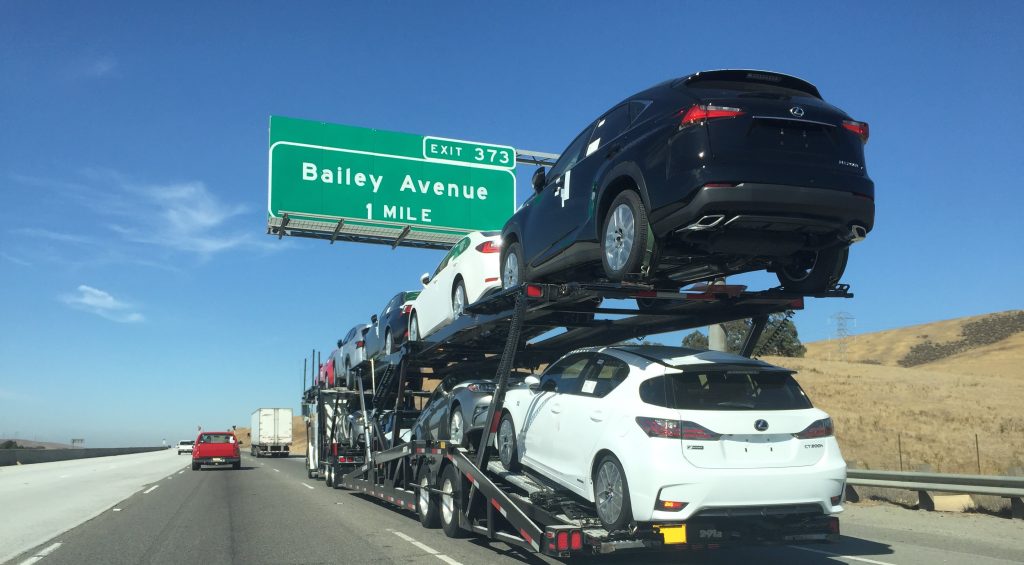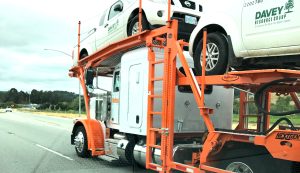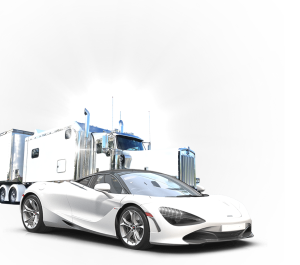Introduction To Vehicle Shipping To Honolulu
Personal Vehicles: Cars And Motorcycles
Shipping personal vehicles, including cars and motorcycles, to Honolulu is a common necessity for many residents and newcomers. The process is relatively straightforward, yet it requires careful planning and understanding of the various regulations and logistical considerations involved. Personal vehicles such as cars are among the most frequently shipped items to Honolulu . Whether it’s a compact sedan or a large SUV, there are specific requirements that need to be met.
First and foremost, the vehicle must be cleaned thoroughly both inside and out to comply with agricultural inspection standards aimed at preventing the introduction of non-native species. Additionally, all loose items should be removed from the car to prevent damage during transit. Motorcycles also make up a significant portion of personal vehicle shipments to Honolulu . The process for shipping motorcycles typically involves crating them securely to ensure they remain stable throughout their journey across the Pacific Ocean.
Just like cars, motorcycles must be cleaned meticulously and free from any soil or plant material. Both types of vehicles require proper documentation before they can be shipped. This includes proof of ownership, such as a title or bill of sale, as well as current registration and insurance documents. It’s important to note that Honolulu an regulations may also necessitate an emissions test for certain models upon arrival.
Moreover, considering Honolulu ‘s unique road conditions—ranging from urban streets in Honolulu to rugged terrains on the Big Island—it’s crucial to evaluate whether your vehicle is suitable for these environments. For instance, while sedans might perform well in city settings, off-road-capable vehicles could offer more versatility on less developed roads.
Recreational Vehicles: Rvs, Atvs, And Utvs
Shipping recreational vehicles (RVs), all-terrain vehicles (ATVs), and utility task vehicles (UTVs) to Honolulu is a popular option for enthusiasts eager to explore the islands’ diverse landscapes. Whether you’re planning an extended road trip with an RV or seeking thrilling off-road adventures with ATVs and UTVs, Honolulu offers unique terrains that cater to various outdoor activities.
Transporting an RV to Honolulu presents a convenient way for travelers to experience the islands without sacrificing the comforts of home. These mobile homes provide flexibility and convenience, allowing you to traverse through scenic routes, campgrounds, and coastal areas at your own pace. Shipping companies typically handle the logistics involved in transporting such large vehicles, ensuring that they meet all necessary regulations and arrive safely at their destination.
ATVs and UTVs are particularly well-suited for Honolulu ‘s rugged trails and off-road paths. These smaller but robust vehicles offer unparalleled access to remote areas that are otherwise difficult to reach. Enthusiasts can look forward to exploring lush rainforests, volcanic landscapes, and sandy beaches with ease. Before shipping these types of recreational vehicles, it’s important to verify that they comply with local regulations regarding emissions, noise levels, and safety standards.
Moreover, securing proper documentation is crucial when shipping any recreational vehicle. This includes title certificates, registration documents, proof of insurance, and any applicable permits required by Honolulu an authorities. Working closely with a reputable shipping company can help streamline this process by providing detailed guidance on necessary preparations.
Ultimately, bringing your RVs, ATVs, or UTVs to Honolulu opens up a world of adventure opportunities while ensuring you have the right equipment to make the most of your island experience.
Commercial Vehicles: Trucks And Vans
Shipping commercial vehicles, such as trucks and vans, to Honolulu involves a unique set of considerations due to the state’s geographical isolation and specific regulatory requirements. Businesses often rely on these vehicles for operations ranging from construction and logistics to deliveries and service provision. Understanding the intricacies of shipping commercial vehicles is crucial for ensuring a smooth transition.
Firstly, it’s essential to recognize that commercial trucks and vans must comply with Honolulu ’s stringent emissions standards. The state follows strict environmental regulations aimed at reducing pollution, so ensuring your vehicle meets these criteria is paramount. Prior to shipment, it may be necessary to obtain an emissions certification or retrofit the vehicle with approved emission control devices.
Additionally, size limitations can affect what types of commercial vehicles can be transported. Larger trucks may require special handling or even disassembly for shipping purposes. It’s advisable to consult with specialized Car Transport companies experienced in handling oversized loads to navigate these complexities efficiently.
Another important factor is the cost associated with shipping commercial vehicles. Due to their size and weight, transporting trucks or vans can be significantly more expensive than shipping standard passenger cars. Costs vary depending on factors like distance from the mainland port of origin, type of shipping (roll-on/roll-off versus containerized), and seasonal demand fluctuations.
Finally, securing proper insurance coverage is crucial when transporting valuable business assets across vast ocean distances. Ensure that both your existing policy and any additional coverage provided by the shipping company are adequate for safeguarding against potential damages during transit.
In summary, while it’s entirely feasible to ship commercial trucks and vans to Honolulu , meticulous planning around regulatory compliance, logistical challenges, cost considerations, and insurance is essential for a successful transport process.
Luxury And Exotic Cars
Shipping luxury and exotic cars to Honolulu involves a unique set of considerations, given the value and specific requirements of these high-end vehicles. Unlike standard automobiles, luxury and exotic cars often demand meticulous handling, specialized transport methods, and additional insurance coverage to ensure their safe arrival in pristine condition.
The allure of driving a luxury or exotic car amidst Honolulu ’s scenic landscapes is undeniable. However, owners must navigate a series of logistical challenges to make this dream a reality. First and foremost is the selection of a shipping company with proven expertise in handling high-value vehicles. Such companies typically offer enclosed transport options that provide an added layer of protection against the elements during transit.
Another critical aspect is the preparation of the vehicle for shipping. This includes documenting its current condition through detailed photographs and written records to safeguard against potential disputes over damages incurred during transportation. Additionally, ensuring that all mechanical parts are functioning properly can prevent complications upon arrival.
Customs regulations also play a significant role when shipping luxury or exotic cars to Honolulu from international locations. Owners must ensure compliance with U.S. import laws, which may include emissions standards and safety regulations specific to each vehicle’s make and model.
Insurance coverage tailored for high-value vehicles is indispensable during this process. Standard insurance policies may not offer adequate protection for luxury or exotic cars; therefore, securing specialized coverage can provide peace of mind.
Ultimately, while the process involves careful planning and attention to detail, the reward is unparalleled: driving an exquisite machine through some of the most beautiful terrains on earth. For car enthusiasts willing to invest in proper logistics, shipping their prized possessions to Honolulu can be an immensely gratifying experience.
Boats And Watercraft
Shipping boats and watercraft to Honolulu is a common practice, given the state’s rich maritime culture and its reliance on the ocean for both recreational and practical purposes. The process of transporting these vessels, however, requires careful planning and consideration due to the unique logistical challenges presented by Honolulu ‘s remote location.
When shipping boats and watercraft to Honolulu , it’s essential to understand the various methods available. One popular option is Roll-on/Roll-off (RoRo) shipping, where boats are driven onto a specialized vessel that transports them across the ocean. This method is efficient for smaller boats such as fishing boats, sailboats, or personal watercraft like jet skis. For larger vessels or those with more complex structures, container shipping or flat-rack shipping might be more appropriate.
In these cases, the boat is either placed in a container for protection or secured on a flat rack before being loaded onto a cargo ship.
Given Honolulu ‘s stringent environmental regulations aimed at preserving its pristine ecosystems, it’s crucial to ensure that all transported watercraft adhere to cleanliness standards. Boats should be thoroughly cleaned to prevent any invasive species from hitching a ride across the ocean.
Additionally, proper documentation must accompany each shipment. This includes proof of ownership and compliance with Honolulu an import laws. Working with experienced logistics companies specializing in boat transportation can help navigate these requirements smoothly.
Overall, while shipping boats and watercraft to Honolulu involves several steps and considerations, it opens up vast opportunities for enjoying one of the world’s most beautiful marine environments. Whether you’re relocating permanently or sending your vessel for an extended stay in paradise, meticulous preparation ensures your boat arrives safely and ready for adventure.
Electric Vehicles (Evs)
Electric vehicles (EVs) have seen a significant surge in popularity in recent years, and this trend extends to the islands of Honolulu . Shipping an EV to Honolulu is not only feasible but increasingly common as the state pushes toward its ambitious clean energy goals. Honolulu ’s commitment to sustainability makes EVs an attractive option for residents and businesses alike.
The process of shipping an electric vehicle to Honolulu is similar to that of conventional cars, with a few additional considerations. One primary concern is ensuring the battery’s state of charge during transit. Manufacturers often recommend shipping EVs with a battery level between 20% and 50% to mitigate any risks associated with overcharging or deep discharging during the journey.
Once on the island, EV owners will find that Honolulu is relatively well-equipped for electric vehicles compared to many other places. The state’s geography—comprising relatively short driving distances within each island—makes it ideal for EV usage, reducing range anxiety that might be more prevalent on larger landmasses. Charging infrastructure continues to expand, supported by both public initiatives and private enterprises aiming to facilitate a seamless transition from fossil fuels.
Furthermore, Honolulu an electricity primarily derives from renewable sources like wind, solar, and geothermal energy. This means operating an EV in Honolulu contributes significantly less carbon emissions compared to states reliant on coal or natural gas power plants.
In summary, shipping and using an electric vehicle in Honolulu aligns perfectly with both logistical practicalities and environmental sensibilities, making it a wise choice for those looking at long-term sustainability in their transportation options on the islands.
Restrictions And Regulations For Vehicle Shipping
When considering the shipment of a vehicle to Honolulu , it’s essential to be aware of the restrictions and regulations that govern this process. First and foremost, all vehicles being shipped must comply with both federal and state environmental regulations. This includes ensuring that the vehicle meets emissions standards set by the Environmental Protection Agency (EPA). Vehicles that do not meet these requirements may be denied entry.
In addition to environmental compliance, there are specific documentation requirements. The owner must provide proof of ownership, such as a title or lienholder authorization if applicable. A notarized letter from any lienholder permitting the shipment is also necessary if there is an outstanding loan on the vehicle.
Another critical regulation pertains to cleanliness; vehicles must be thoroughly cleaned before shipping to prevent the introduction of invasive species. This includes removing all dirt and organic material from undercarriages and wheel wells. Failure to comply can result in delays or even refusal at the port of entry.
There are also size limitations for vehicles being shipped. Oversized vehicles such as large trucks or modified SUVs may incur additional fees or face restrictions depending on the shipping company’s capabilities and policies.
Lastly, personal items cannot be left inside vehicles during transport due to safety and liability concerns. Shipping companies typically require that cars be emptied entirely before loading them onto vessels.
Understanding these restrictions and regulations ensures a smoother shipping process, helping avoid potential issues that could delay or complicate your vehicle’s journey to Honolulu .



